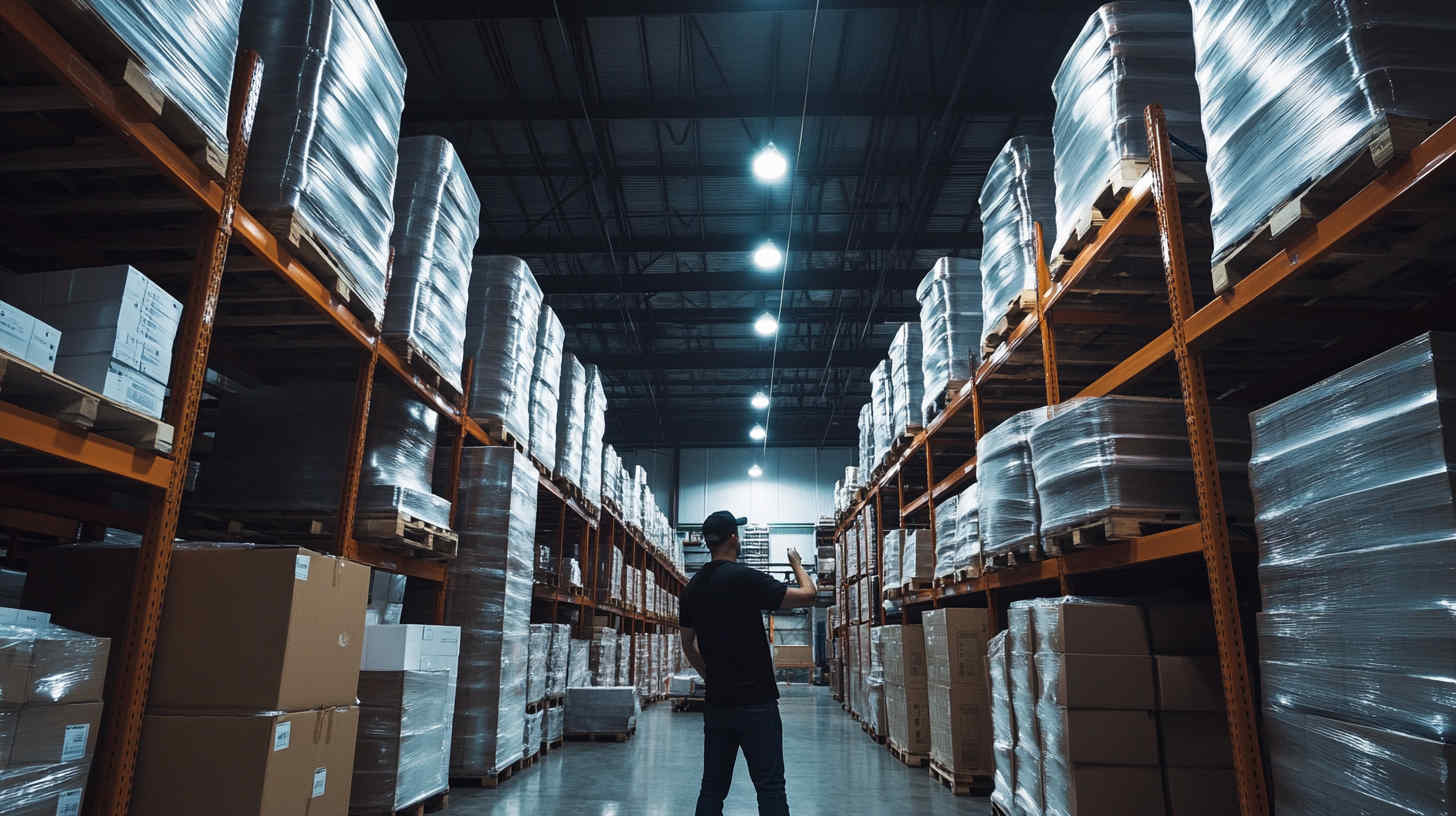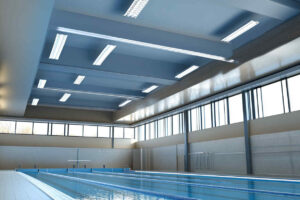Struggling with high energy bills and constant maintenance from your old metal halide lights? It’s draining your budget and slowing down operations. Let’s fix that by switching to LED lighting today.
Replacing metal halide with LED is a smart move for energy efficiency, better lighting quality, and lower long-term costs. It involves choosing the right LED equivalent, bypassing the ballast if necessary, and ensuring compatibility in wattage and lumens. You can upgrade your lighting system easily with retrofit kits or by installing brand-new LED fixtures designed for high-intensity environments. LED upgrades offer faster start times, higher CRI, and longer lifespan.
Stick around and let me walk you through the whole process step by step.
Table of Contents
Benefits LEDs Have Over Metal Halide Bulbs
LEDs offer major advantages when compared to metal halide bulbs, especially in commercial and industrial lighting applications.
1. Energy Efficiency
LEDs use significantly less power to produce the same or even more light. For example, a 100W LED can easily replace a 250W metal halide bulb, reducing energy consumption by more than 60%. This leads to lower electricity bills and better energy performance.
2. Longer Lifespan
Metal halide bulbs typically last around 10,000 to 20,000 hours. LEDs, on the other hand, can last 50,000 hours or more. That means fewer replacements and less maintenance, especially in hard-to-reach places like high ceilings or outdoor poles.
3. Instant On/Off
Metal halide lights take several minutes to reach full brightness. LEDs power on instantly at 100% brightness with no warm-up time. This makes them ideal for areas where lights are frequently turned on and off.
4. Better Light Quality
LEDs provide more consistent, uniform illumination without the yellow or green tint that metal halide bulbs often develop over time. They also offer better color rendering, helping you see objects more clearly and accurately.
5. Lower Maintenance Costs
With longer lifespans and no need for warm-up periods or frequent bulb changes, LEDs drastically cut down on maintenance time and labor costs. This is especially helpful in commercial or outdoor settings where access is difficult.
6. Dimming and Control Options
LEDs can be easily integrated with motion sensors, dimmers, and smart lighting systems. Metal halide lights lack this flexibility and usually require separate components for basic control.
7. Environmental Benefits
LEDs do not contain harmful substances like mercury, which is present in metal halide bulbs. They are safer to dispose of and more environmentally friendly over their lifetime.

spacious_indoor_badminton_court_under_LED_high_bay-light
How Do You Replace Halogens With LEDs?
Upgrading from halogen or metal halide to LED lighting is a smart move for energy savings, lower maintenance, and better performance. There are two common ways to make the switch, depending on your setup and goals.
1. Retrofit Using LED Bulbs
The easiest way is to replace your existing halogen or metal halide bulbs with LED retrofit bulbs. These are designed to fit into the same sockets (like E27, GU10, or PAR styles) without needing to change the fixture.
- Step 1: Turn off the power to the light.
- Step 2: Remove the old halogen or metal halide bulb.
- Step 3: Insert the LED bulb in the same socket.
- Step 4: Turn the power back on and test.
Many retrofit LEDs are plug-and-play, meaning no additional wiring is required. This method saves time and money on installation, especially for homes and small businesses.
2. Replace the Entire Fixture
For commercial or industrial applications—or for the best energy performance—you might want to remove the whole halogen fixture and install a dedicated LED luminaire. This is especially true if the old fixture uses a ballast.
- Step 1: Turn off the power and remove the existing fixture.
- Step 2: Disconnect or bypass the ballast (if present).
- Step 3: Install the new LED fixture and connect it directly to the power supply.
- Step 4: Test to ensure everything works properly.
This approach may cost more upfront but offers better reliability, optimized performance, and fewer parts that can fail.
Whether you retrofit or go with full replacement, upgrading from halogen to LED is a smart, long-term investment.

warehouse_with_LED_high_bay_lights
What Is the Equivalent Power of LED vs Metal Halide?
When replacing metal halide (MH) fixtures with LEDs, it’s crucial to focus on lumen output rather than wattage. LEDs are more efficient, meaning they produce the same or more light using less power. Here’s a detailed comparison:
Metal Halide to LED Conversion Chart
| Metal Halide Wattage | Typical Lumens (Initial) | LED Equivalent Wattage | LED Lumens Output |
|---|---|---|---|
| 175W | 14,000 – 15,000 | 50W – 70W | 7,000 – 10,000 |
| 250W | 20,000 – 21,000 | 80W – 100W | 10,000 – 13,000 |
| 400W | 36,000 – 40,000 | 120W – 150W | 15,000 – 25,000 |
| 1000W | 90,000 – 110,000 | 300W – 400W | 40,000 – 60,000 |
Note: Metal halide lamps experience significant lumen depreciation over time, often losing up to 50% of their brightness before the end of their rated life. In contrast, LEDs maintain consistent lumen output throughout their lifespan.
Key Considerations
- Lumen Maintenance: LEDs maintain brightness better over time, reducing the need for frequent replacements.
- Energy Efficiency: LEDs consume less power, leading to significant energy savings.
- Instant On: Unlike MH lamps that require warm-up time, LEDs provide instant full brightness.
- Directional Lighting: LEDs emit light in specific directions, reducing wasted light and improving efficiency.
By focusing on lumen output and considering the advantages of LEDs, you can make informed decisions when upgrading from metal halide fixtures.
Are LED Lumens the Same as Metal Halide Lumens?
Technically, yes—but practically, no. Lumens are lumens, but how they’re delivered makes a huge difference. Metal halide lights lose brightness over time (called lumen depreciation), and their light is often less focused.
LEDs, however, offer directional lighting. That means nearly all the light is directed exactly where you need it—no wasted output bouncing off reflectors. So a 20,000-lumen LED appears brighter and more effective than a 20,000-lumen metal halide.

LED high bay light with Anti glare PC cover 2
5 Tips for Replacing Metal Halide Fixtures With LED
Upgrading from metal halide to LED lighting can significantly improve energy efficiency, reduce maintenance costs, and enhance light quality. Here are five essential tips to ensure a successful transition:
1. Focus on Lumen Output, Not Just Wattage
When replacing metal halide fixtures with LEDs, it’s crucial to match the lumen output rather than relying solely on wattage. LEDs are more efficient and can produce the same brightness with lower wattage.
Example Equivalents:
- 250W metal halide → 100W LED
- 400W metal halide → 150W LED
- 1000W metal halide → 400W LED
Ensure the LED replacement provides a similar lumen output to maintain desired illumination levels.
2. Assess Ballast Compatibility
Determine whether your existing fixtures have ballasts and if they are compatible with LED retrofits. There are two main approaches:
- Ballast-Compatible (Type A): LED lamps designed to work with existing electronic ballasts. Simple installation but may have compatibility issues.
- Ballast-Bypass (Type B): Requires removing or bypassing the ballast and directly wiring the LED lamp to the power source. Offers better efficiency and reliability.
Always consult the LED manufacturer’s guidelines to ensure proper installation.
3. Evaluate Your Space and Lighting Needs
Consider the specific requirements of your space to select the appropriate LED fixtures:
- Mounting Height: Higher ceilings may require higher lumen output and specific beam angles.
- Beam Angle: Choose a beam angle that provides adequate coverage without causing glare.
- Application: Different areas (e.g., warehouses, parking lots, sports facilities) have varying lighting needs.
Proper assessment ensures optimal lighting performance and energy savings.
4. Choose High-Quality Components
Select LED fixtures that incorporate reputable components for longevity and performance:
- LED Chips: Brands like Lumileds, Osram, and Seoul are known for quality.
- Drivers: Reliable drivers from Philips, Meanwell, or TCI ensure consistent operation.
High-quality components reduce the risk of premature failure and maintenance issues.
5. Verify Certifications and Ratings
Ensure the LED fixtures meet necessary certifications and ratings for safety and performance:
- Certifications: Look for CE, RoHS, and DLC listings.
- Ingress Protection (IP) Rating: An IP65 rating or higher is recommended for outdoor or dusty environments.
Compliance with standards guarantees the fixtures are suitable for your specific application and environment.
By following these tips, you can effectively replace metal halide fixtures with LED lighting, achieving improved efficiency, reduced maintenance, and enhanced illumination.

bustling_logistics_center_with_LED_high_bay_light
Summary
Switching from metal halide to LED is one of the best upgrades you can make. You’ll save money, reduce maintenance, and enjoy better-quality light for years to come. Whether it’s a 250W metal halide or a massive 1000W beast, there’s a LED solution ready to take its place with less energy and more efficiency.
Need help choosing the right LED replacement for your metal halide fixtures? Contact us now at Logos Lighting and we’ll guide you step by step.



